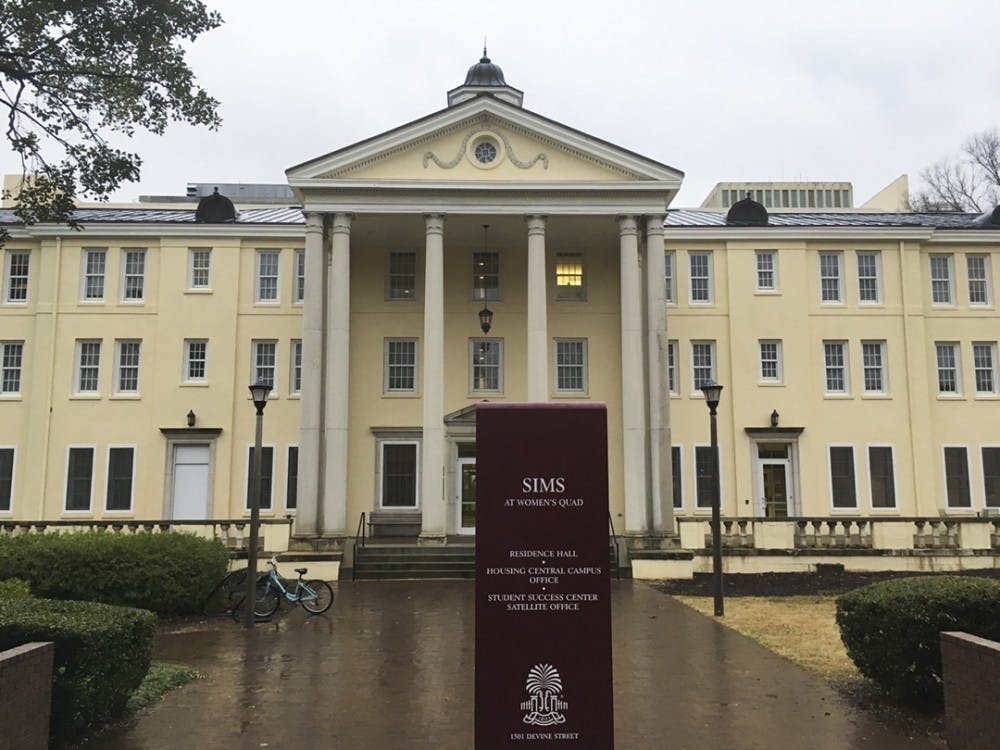If you live or lived in Women's Quad, you may have called Sims College home. If not, you may have been there on business with the Student Success Center's satellite office, or perhaps the Central Campus Housing Office. Maybe, like me, you've never been inside the building at all.
Regardless of your association or lack thereof with the place, you should know the history of its name, and why it should be named something else.
James Marion Sims, a USC alumnus of the class of 1832, is best known as "the father of modern gynecology." If you've ever had the misfortune of experiencing a gynecologist's appointment that involved a speculum, you have been intimately familiar with Sims' work.
He also performed such feats as curing the vesico-vaginal fistula, a condition usually resulting from traumatic births that caused urine leakage from the vagina and opening the first hospital dedicated to women's healthcare in New York City. Presumably because of this, the central building of Women's Quad is named after him and statues of him exist in New York City.
What this somewhat rosy recounting of history often leaves out is that his discoveries largely rest on the backs of the enslaved women whose bodies he used as fodder for his experiments. Sims' solution to the problem of where to find warm bodies to cut into was to make arrangements with slave owners who traded unlimited access to the bodies of their slaves whose vesico-vaginal fistulas made them less "useful" for the hope that he could cure them of their inconvenient medical problem.
Although Sims himself claimed that the women wanted the experiments badly, his is the only word we have on the matter. There's a vanishingly remote possibility he might be telling the truth, but if you examine it with any sort of critical thinking, there is very little chance that the women would have been allowed to say no. Their "consent" is a polite fiction hiding a brutal truth. I doubt anyone would volunteer happily to be subjected to dozens of successive surgeries, which had hideous complications like blood poisoning, and were performed without anesthesia, because Sims believed that black people didn't experience pain like white people.
We have no other accounts of the experiments but Sims' own. By and large, the enslaved women that he repeatedly mutilated go nameless, voiceless and unremembered — only three, his first success stories, were noteworthy enough for him to mention by name. His thirtieth surgical violation of Anarcha fixed her fistula, and he used two more women, Lucy and Betsey, to ensure that he hadn't merely stumbled into a chance success.
This horrific part of his history and the scientific legacy that frequently overshadows it is celebrated on campus by Sims College.
Confederate statues represent a controversy in the South. Despite overwhelming historical evidence found in Confederate state constitutions that secession was motivated by slavery, many insist that Confederates are still worth venerating as defenders of states' rights.
However dubious this logic is when applied to Confederate soldiers, applying it to Sims is absolutely ridiculous. His medical discoveries are inextricably linked to the atrocities he committed on enslaved women; there's no veneer of civility and honor that we can reasonably pull over his experiments to pretend they should be glorified.
Likewise, the fact that his discoveries are a part of medical history can't justify our elevating his name. As proof, I hold up the fact that we have somehow avoided erecting statues to and naming buildings after Gobbels and Mengele, even though their human experiments on prisoners in concentration camps resulted in some useable data about how to keep people from freezing to death and provided the basis for some further research.
Obviously, episodes in science like these should not be forgotten. Writing them out of the history books erases the suffering that enslaved women went through to make a USC alumnus the "father of gynecology." But we also can't pretend that it's okay to have students living in halls named for someone whose most noteworthy work came at the expense of countless enslaved women's bodies, blood and pain.
It's especially hideous that his building is the central feature of Women's Quad. It lends credence to the idea of his work uplifting women, when in reality it was founded in the oppression of black women.
If we want to write this part of history large on a part of Women's Quad, we should honor Anarcha's resilience, not Sims' legacy.

